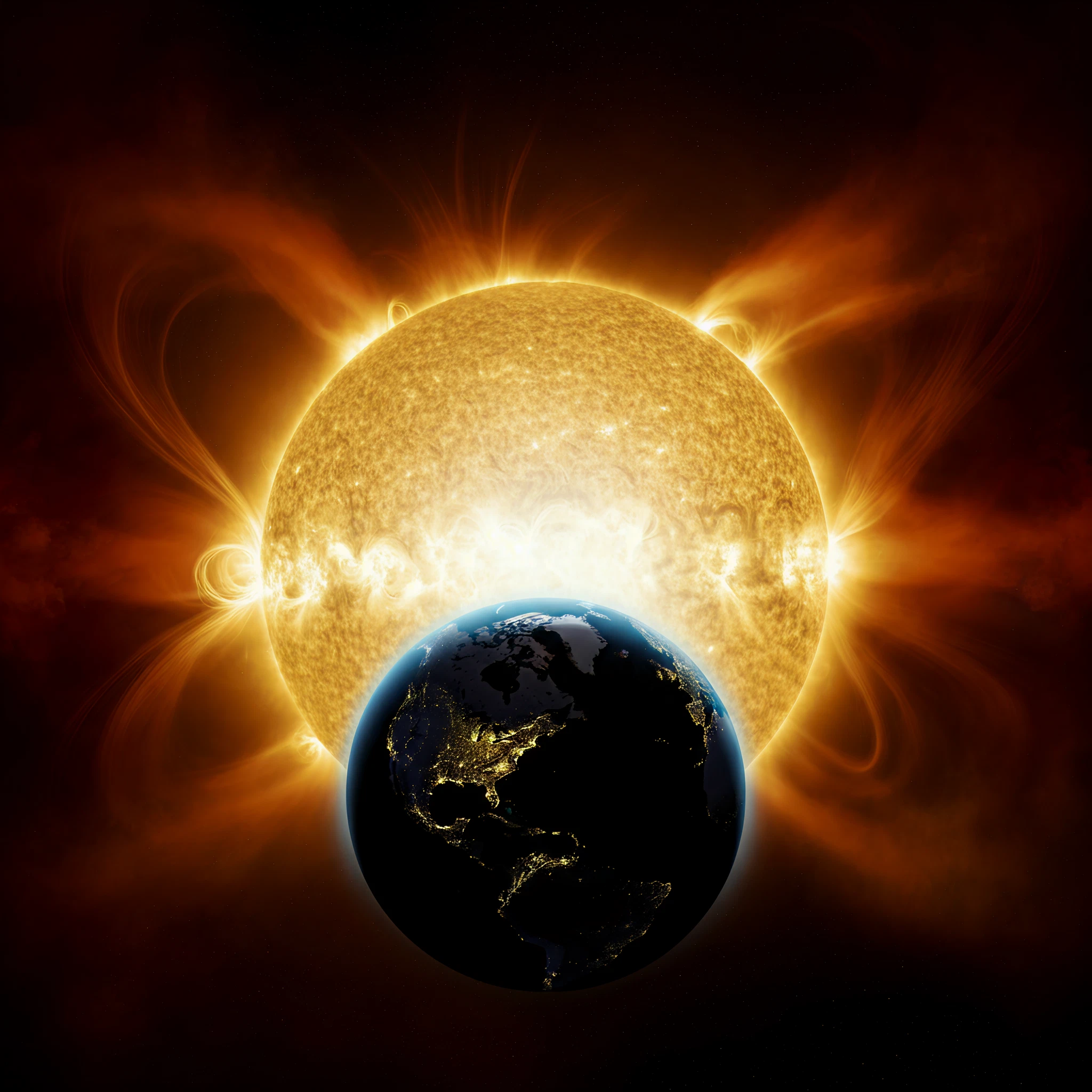Understanding solar flares and their impact
NASA has issued a critical alert regarding heightened solar activity as the Sun reaches the peak of its 11-year solar cycle. This increased activity elevates the likelihood of powerful solar flares, which can disrupt essential technologies and impact life on Earth. But what exactly are solar flares, why are they significant, and how do we prepare?
What are solar flares?
Solar flares are intense bursts of radiation caused by the release of magnetic energy from sunspots. These flares travel at the speed of light, carrying charged particles and electromagnetic energy toward Earth. They can vary in their intensity, and the most powerful are classified as X-class flares.
This phenomenon occurs when the Sun’s magnetic fields undergo sudden changes, releasing immense energy. At the solar maximum of its cycle, the Sun experiences a surge in such eruptions.
NASA’s warning
NASA has revealed that the Sun recently emitted an X2.7-class solar flare, one of the most powerful types of these events. The flare caused radio blackouts across the Middle East for approximately ten minutes, as confirmed by NOAA’s space weather forecasters.
Additionally, NASA has flagged increased activity from sunspot regions now rotating to face Earth, potentially leading to more severe space weather. Observatories like NASA’s Solar Dynamics Observatory are monitoring these events closely, offering timely updates to minimize disruptions.
How solar flares affect Earth
You might be wondering how solar flares could impact your daily life. Here are some major disruptions they can cause:
- Radio Communications: High-frequency radio signals may experience blackouts, as observed during the recent solar flare.
- GPS and Navigation: Navigation signals can face interference, disrupting global positioning systems.
- Power Grids: Strong solar flares can overload power grids, leading to outages.
- Spacecraft Operations: Satellites and astronauts in orbit face risks from increased radiation.
Solar flares may also create stunning auroras, visible in regions normally untouched by the phenomenon, due to coronal mass ejections (CMEs).
NASA’s monitoring efforts
To mitigate these risks, NASA continuously monitors solar activity using its Solar Dynamics Observatory and other advanced tools. Combined with NOAA’s forecasting capabilities, scientists aim to provide early warnings of severe space weather events.
These monitoring efforts ensure timely communication of risks, enabling organizations and facilities to take precautionary actions to safeguard critical systems.
Expert insights and observations
According to NOAA, increased solar activity is expected over the coming days and weeks, as the Sun continues its active phase. The Met Office has also forecasted auroras and potential disruptions from the AR4087 sunspot region currently facing Earth.
Solar photographers like Vincent Ledvina have described the current solar activity as “intense,” with potential for even more significant events as sunspot regions align with Earth.
How to prepare for solar flares
While individuals cannot prevent solar flares, staying prepared and informed is critical. Here are a few tips:
- Follow NASA and NOAA Updates: Keep track of the latest space weather warnings from these organizations.
- Backup Critical Data: Ensure important files are saved in multiple locations or offline.
- Use Offline Navigation: Download maps and navigation tools for use in case GPS systems are disrupted.
- Stay Alert for Power Disruptions: Be prepared for potential power outages by having essentials like flashlights and batteries on hand.
The Sun at solar maximum
The current spike in solar activity is no surprise, as the Sun is at its solar maximum. Occurring every 11 years, the solar maximum is when the Sun’s magnetic poles flip, leading to an increase in sunspots, flares, and CMEs.
The ongoing space weather serves as a reminder of the powerful forces in our solar system and their direct impacts on Earth.
Stay informed
NASA’s warning about amplified solar flare activity underscores the importance of vigilance and preparedness. By staying informed, you can minimize potential disruptions and appreciate the intricacies of our cosmic connection to the Sun.
For further updates and expert insights into space weather phenomena, stay tuned to NASA’s and NOAA’s announcements.








